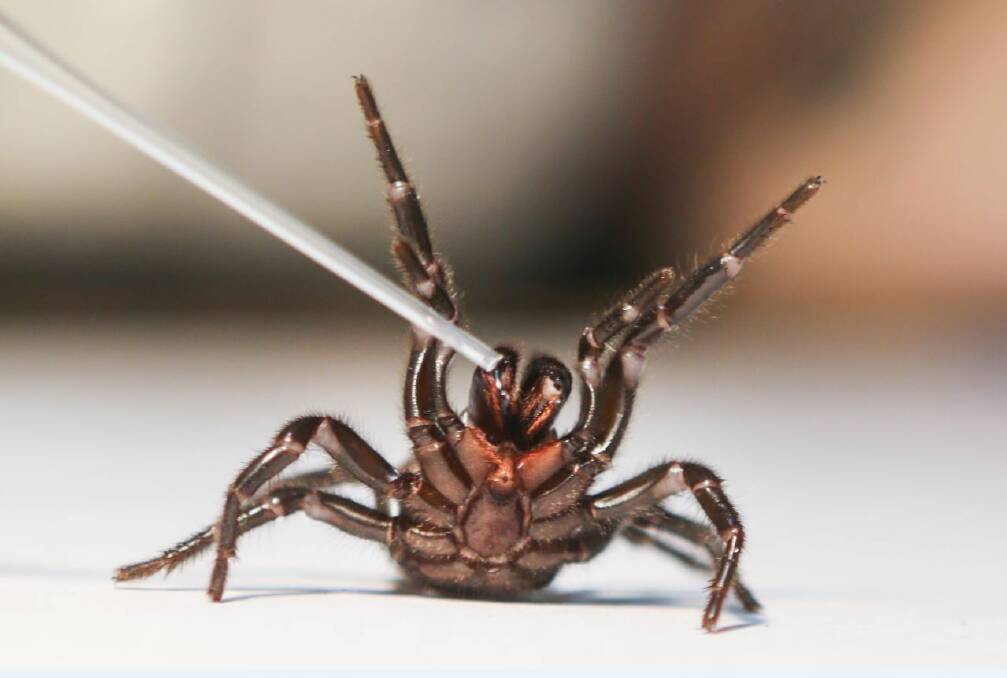
Arachnophobes take cover.
Create a free account to read this article
$0/
(min cost $0)
or signup to continue reading
First we were warned that snakes would be out and about after the recent heavy rains.
Now it seems they are not the only creatures we need to worry about, with spiders, and especially funnel-webs, expected to be on the move in coming weeks.
The Australian Reptile Park on the NSW Central Coast issued a warning yesterday to keep an eye out for the deadly creatures.
And it comes just days after photos and videos emerged of scores of spiders making their way to dry land in a bid to outrun flood waters.
The reptile park said the worst flooding NSW had seen in 100 years, followed by warm weather, was the perfect mix for a plague of funnel-web spiders to be on the move.
An accompanying video is enough to terrify even those with the strongest disposition towards spiders.
Sutherland Shire is a prime habitat for funnel-web spiders, which thrive in warm, humid and wet conditions, and are particularly active at night.
Four types of funnel-web spiders are found in southern Sydney - the Sydney funnel-web, Illawarra funnel-web, southern tree-dwelling funnel web and Blue Mountains funnel-web.
While female funnel-webs mostly stay hidden in burrows, the much more venomous male leaves its burrow in summer to look for a mate as it nears maturity.
That is when unsuspecting people are most likely to come into contact with a funnel-web, either in the garden, pool, under towels and clothing or hidden in a shoe.
Funnel-web spiders love bushy, sloping areas, creeks and gullies. Backyard pools or anywhere wet or damp are also favourite hiding spots, with funnel-web spiders able to survive underwater for long periods.
Retaining walls, sleepers and garden beds may also harbour funnel-webs, which are a type of colonising spider. A 10-metre retaining wall could house as many as 20 to 30 funnel-webs.
The Leader reported last month that the recent wet weather and high humidity was enticing funnel-web spiders out of their burrows.
Sutherland Shire and South Coast-based pest control expert Dylan Cope, of Dylan Cope Pest Control, said funnel-web spiders thrived in wet and humid conditions.
"Funnel-webs come out of their burrows because it is hot, and the rain also flushes them out," he said.
Live funnel-web spiders are sought by the Australian Reptile Park for its Spider Venom Program, which sees venom collected from spiders to be used in the manufacture of antivenoms that can save the life of a spider-bite victim. To keep up supplies, highly trained staff regularly 'milk' spiders, before the venom is sent off to make antivenom.
It needs 300 to 400 spiders a year to keep up with demand for venom.
Sutherland Hospital emergency department is one of a handful of collection points in Sydney. Live spiders can be dropped off 24 hours a day.
If you or someone you know is bitten by a funnel-web spider, keep the bite victim calm and immobile then apply a pressure-immobilisation bandage to the bite site and the adjacent limb. Further restrict movement by applying a splint. Seek emergency medical assistance immediately.

